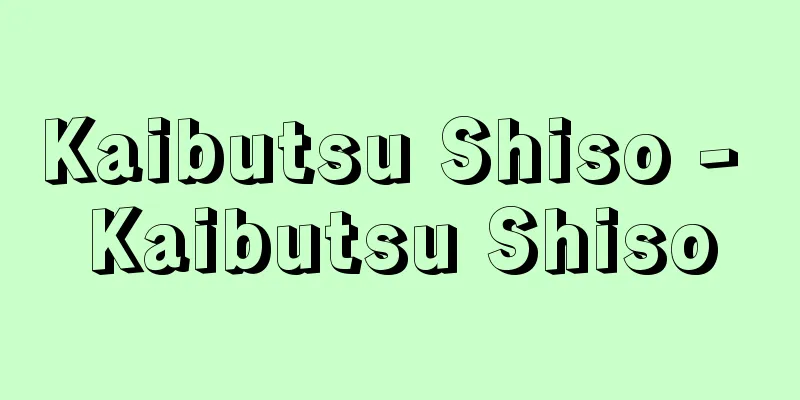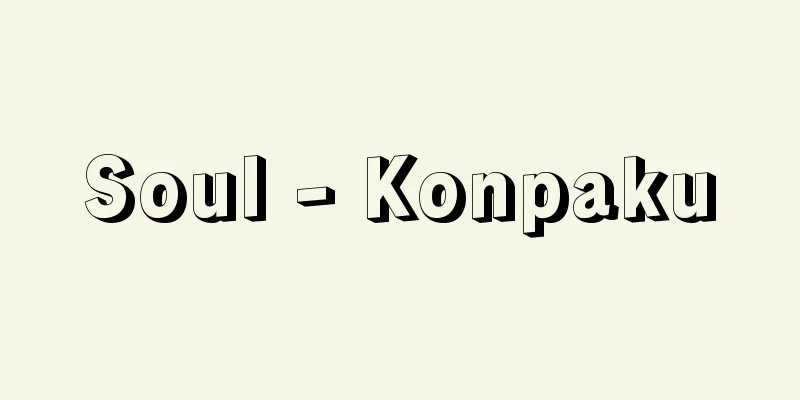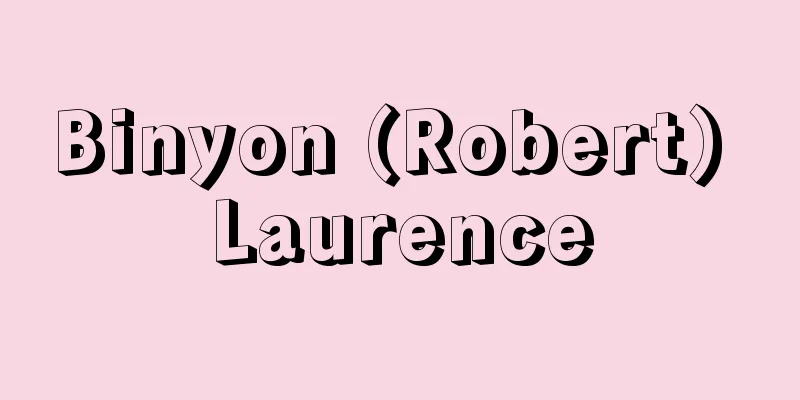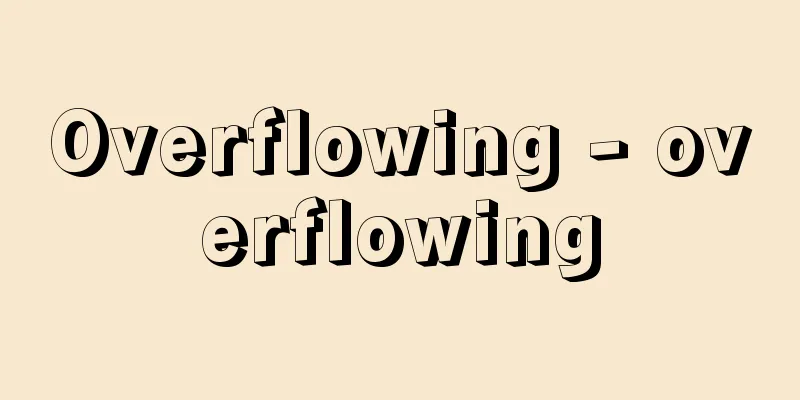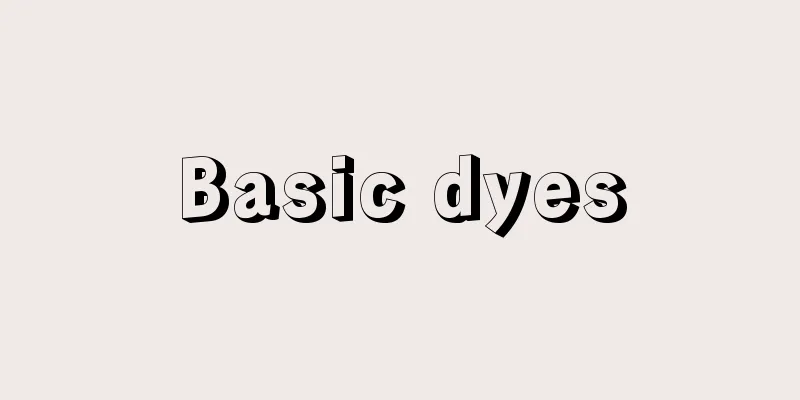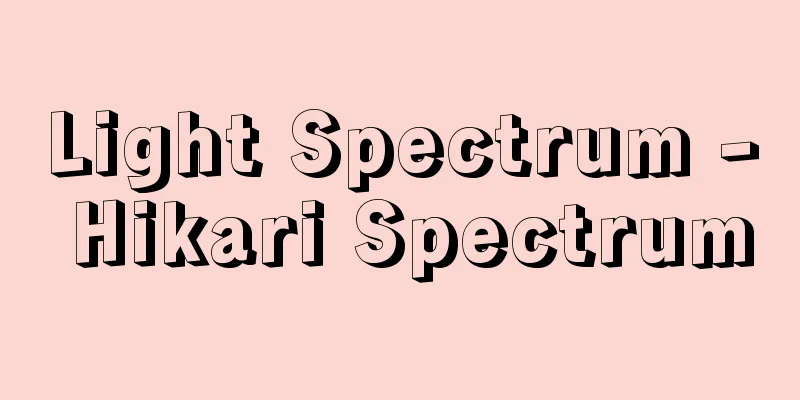Poison - poison
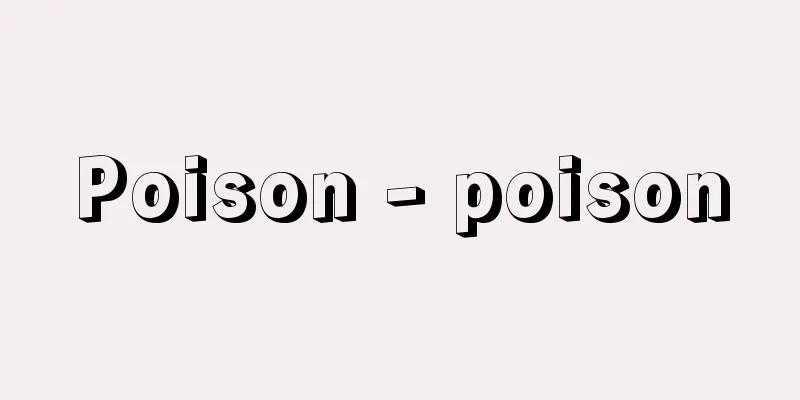
|
A word that refers to poisonous natural substances that are used almost as they are, without being refined or synthesized. However, because there is no reading (kun) that corresponds to the kanji for poison, there is relatively little folklore about poison, and there are examples of non-poisonous plants similar to cultivated species that have the kanji for poison (such as dokuichigo), it can be said that the Japanese word doku , which refers to all poisonous substances in general, was adopted as a general term from traditional Chinese medicine and the like relatively recently, and its usage is not fixed. The main reasons why peoples around the world use poisons are (1) to obtain animal food and (2) to induce hallucinations. Other examples include poison oracles (Azande culture in central Africa), in which chickens are given poison and their reaction is observed. (1) can be used in hunting (mainly poison arrows shot from bows or blowguns) or in fishing (poison arrows, poison harpoons, poison streamers). Most of the poisons used are biological poisons that are easy to obtain, especially plant poisons. Well-known plant poisons are Strophanthus in Africa, Aconite in East Asia, Ipoh in islands of Southeast Asia, and Curare in South America. In non-agricultural cultures, the use of poisons is particularly important as an efficient way to obtain food, and in East Asia, the use of poisons by old Asian peoples is well known. Poisons have probably been important since prehistoric times, but no remains of the poisons themselves remain, and we can only guess from the notches in arrowheads and harpoon tips. Hallucinogenic poisons are used during healing ceremonies by shamans. Poisons used for this purpose include beverages (alcohol, kava, etc.), chews (magic mushrooms, coca, etc.), and inhalants (opium, tobacco, etc.). Many ethnic groups in Central America use the peyote cactus, Lophophola williamsi, and its use is particularly well-known in the Huichol culture of Mexico. In the Huichol culture, peyote cactus is collected according to a set method as an annual event, and the cactus is positioned in their worldview as food for the soul in contrast to food for the body. In general, the preparation and use of poisons used to induce hallucinations involves complex procedures and taboos, and they often have symbolic meanings. Some ethnic groups have entered a hallucinogenic state by committing self-destructive acts using poison during their coming-of-age ceremonies. [Akira Sasaki] "Cultural History of Poison" edited by Jiro Sugiyama and Mikio Yamazaki (1990, Gakuseisha) [Reference] | | Act| |Source: Shogakukan Encyclopedia Nipponica About Encyclopedia Nipponica Information | Legend |
|
有毒自然物を精製・合成せず、ほとんどそのまま用いたものをさす語。ただし漢字の毒に対応する訓(くん)がないこと、毒に関する民間伝承が比較的少ないこと、栽培種に類似した無毒の植物に、どくを冠する例(ドクイチゴなど)があることなどから、毒物全般をさす日本語のどくが、漢方などから一般用語として採用されたのは比較的新しく、用法が固定していないことを指摘できる。 世界の諸民族が毒を利用する主要な目的は(1)動物性食料の獲得、(2)幻覚導入である。このほかにニワトリに毒物を与えて反応をみる毒物託宣(アフリカ中央部のアザンデ文化)がある。(1)には、狩猟での利用(主として弓や吹き矢筒から発射される毒矢)と、漁労での利用(毒矢、毒銛(もり)、毒流し)がある。利用毒物には入手しやすい生物毒、とくに植物毒が多い。アフリカではストロファンツス、東アジアではトリカブト、東南アジア島嶼(とうしょ)部ではイポー、南アメリカではクラーレが著名な植物毒である。非農耕文化では効率のよい食料獲得手段として毒利用がとくに重要であり、東アジアでは旧アジア系諸民族の毒利用がよく知られている。先史時代から毒が重要だったのだろうが、毒自体が遺物として残存せず、鏃(やじり)、銛先の刻み目から推測するにとどまっている。 幻覚導入に用いるのはシャーマンの加療儀礼の際などである。この目的で用いる毒には、飲料(アルコール、カバなど)、そしゃく物(「魔法キノコ」、コカなど)、吸引物(アヘン、タバコなど)がある。ペヨーテサボテンLophophola williamsiを用いる民族が中米に多く、とくにメキシコのウィチョル文化での利用が著名である。ウィチョル文化では、年中行事としてペヨーテサボテンを作法に従って採集し、肉体の食物に対する精神の食物としてこのサボテンを彼らの世界観のなかに位置づけている。一般に幻覚導入に用いる毒の調整や利用には複雑な手続とタブーを設け、象徴的な意味をもたせることが多い。成人式に毒を用いた自虐的行為をして幻覚状態に入った民族もある。 [佐々木明] 『杉山二郎・山崎幹夫編著『毒の文化史』(1990・学生社)』 [参照項目] | | | |出典 小学館 日本大百科全書(ニッポニカ)日本大百科全書(ニッポニカ)について 情報 | 凡例 |
Recommend
Melampodidai
…Phylacus, shocked by this, released him and prom...
Brachymeria fonscolombei (English spelling)
…[Shiro Katsuya]. . . *Some of the terminology th...
thought
…It is said that the first person to take a photo...
Festival - Festival
Kabuki dance piece. Kiyomoto. Original title: Mata...
Andronovo culture
A Bronze Age culture that occupies a period in the...
Kydōnēs Dēmētrios (English spelling)
Around 1324 - 1397 or 1398 A late Byzantine theolo...
Yamae [village] - Yamae
A village in Kuma County in southern Kumamoto Pref...
Mashike Mountains - Mashikesanchi
A mountain range in western Hokkaido. Also known ...
Lushan Conference - Lushan Conference
The expanded Politburo meeting of the Communist Pa...
Tsunashima [Hot Springs] - Tsunashima
This hot spring is located in Tsunashima-cho, Koho...
Pogranichnye voiska (English spelling) Pogranichnye voiska
...The latter is common in former communist count...
Auxin - Auxin
A type of plant hormone. A general term for organ...
Stress intensity factor - (crack tip) stress intensity factor
Also called the crack stress field coefficient. It...
Dust Devil - Jinsenpu
A phenomenon in which strong sunlight causes the t...
Merlucciidae
...General term for marine fish of the family Mer...

